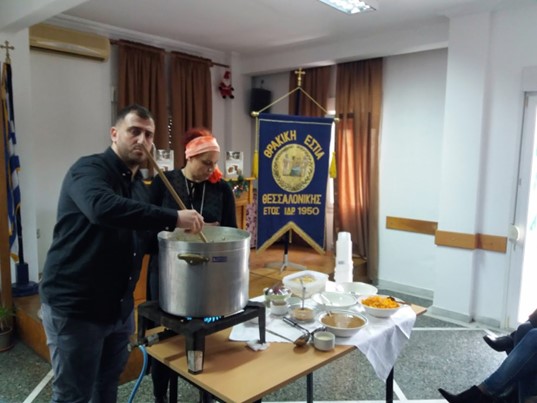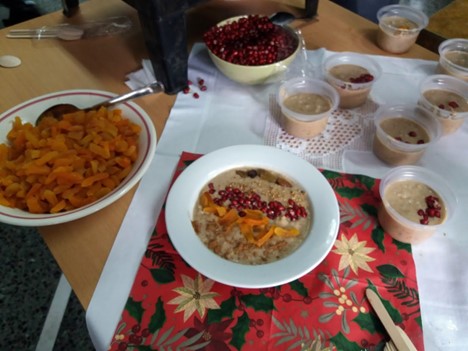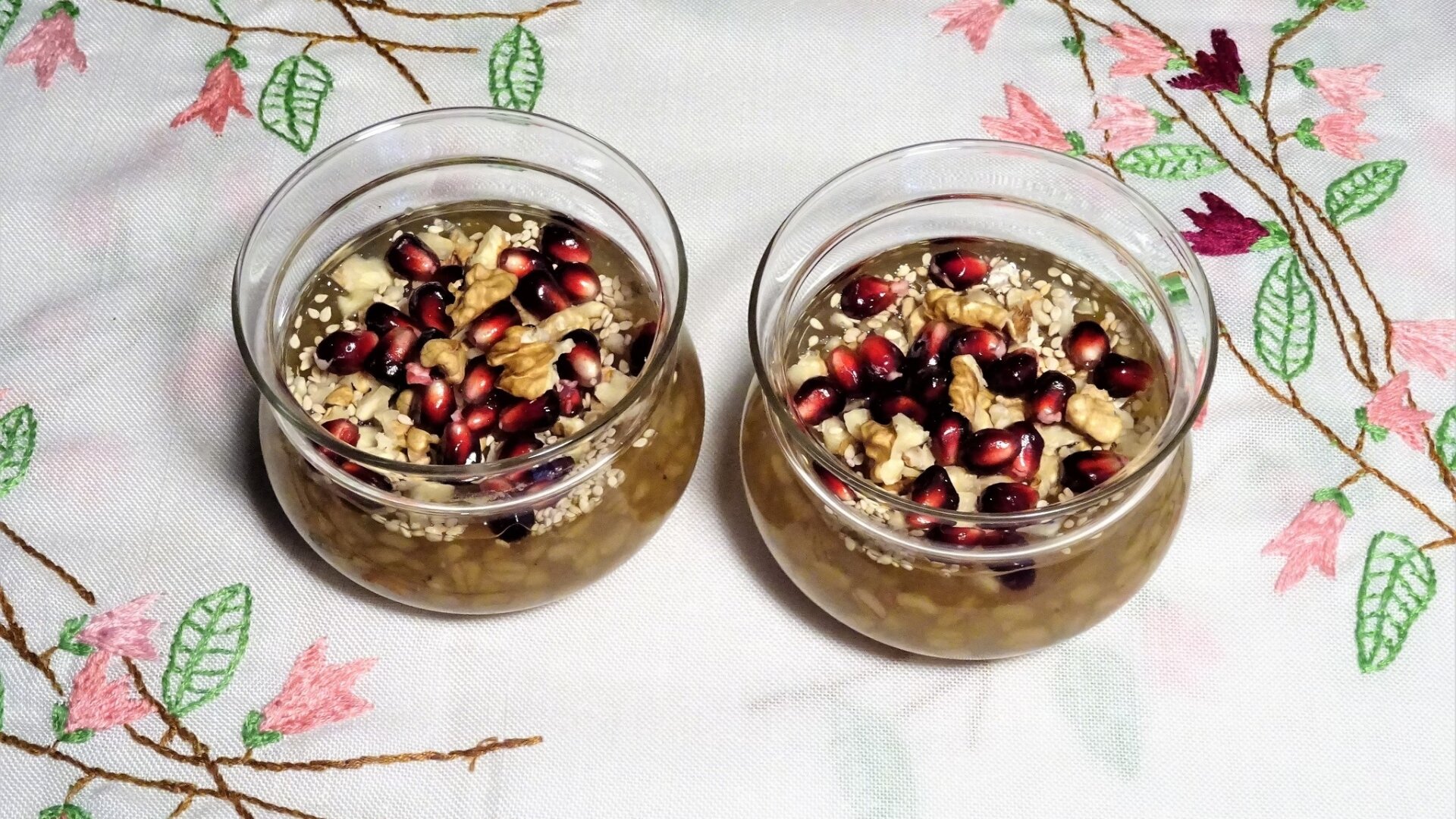By Marina Siskos
People are communicating incessantly with the past and the preservation of old customs and habits mean that a need coming from the past, is still relevant in the present.
As for the material and the culinary customs, those seem to be embedded in societies’ lives, becoming a natural part of everyday life.
Varvara is an Orthodox custom to honour Saint Barbara, celebrated on December 4 and which is tied to the region of Thrace.
Here follows a brief history of St. Βarbara’s life and the meaning of the custom to this day.
The courageous Saint that saved the lives of Christians:
St. Barbara is the patron of Hellenic artillery of the armed forces and of the children. On this day, people would prepare honey pies and the Varvara dessert, as it is called and cooked in Thrace, to honour her.
This custom dates to the antiquity and the seeds, its fundamental ingredient, alludes to fertility.

In the 3rd century, Dioscurus, St. Barbara’s father and cruel idolater, was plotting against the Christians. He dictated every baker to poison the food the Christians were about to buy. St. Barbara learnt about the plot and communicated her father’s scheme, so that no one would buy anything edible for the following days. Therefore, people had to eat from the stored goods of the household, and wheat was one staple commonly kept at this time of the year. Yet, wheat alone wouldn’t be enough to saturate people’s hunger. The Christians mixed it with other, miscellaneous ingredients, such as dry nuts, beans, and raisins to enrich the dish.
People were saved thanks to St. Barbara’s courageous intervention, but she was doomed to her father’s ire and punishment. She was decapitated by Dioscurus himself and turned to a martyr.
Protection of the Earth and its produce:
Varvara, a culinary custom, is tied to the earth and its produce. It heralds the beginning of the long and hard period of winter in the rural areas and, with its seeds and nuts, it is a wish for fertility, health and abundance.
As nutrition promotes good health and staves off disease and frailty, St. Barbara is also the patron of children’s health.
Varvara is a significant celebration in Thrace, where every household reverently prepares the dessert and share it with the community, wishing for a healthy and thriving winter. It is an ancient custom, variations of which are traced with the use and consumption of the products of the earth, even before its connection to the Christianity. Varvara is celebrated collectively, thus sealing the solidarity of the community, making a silent promise for support and offer, so vital for the preservation and prosperity of the society.
What follows is the recipe, as taken from the book of distinguished food journalist, Eleni Psychouli. Eleni suggests the consumption of this nutritional dessert for breakfast:

Ingredients:
- 1 ½ kg of wheat
- A pinch of salt
- A leaf of laurel
- 1 tbs of parsley (alternatively: spearmint)
- 1 tbs of ground cinnamon
- 1 tbs of ground clove
- 1 tbs of ground cumin
- 1 cup of peeled almonds
- 1 cup of hazelnuts
- 1 cup of walnuts
- ½ cup of sesame
- 1 cup of pomegranate seeds
- 2 cups of sugar
- ½ cup of black raisins
- ½ cup of blonde raisins
- 1 ½ of grated, roasted chickpeas
Recipe:
- From the night before, dip the wheat into a bowl of water and let it soak.
- The next morning, boil the wheat in a pan full of water with the laurel leaf in it and a pinch of salt-just on the tip of the spoon. The aim is to soften the wheat, with care not to break its seeds.
- Fully drain the wheat. You might save the drained water to make the asure.
- Place a non-stick pan on medium heat and roast the nuts. You might roast each serving of nuts separately, but they become just as delicious roasted together-apart from the sesame. The sesame is extra sensitive, so make sure you roast it separately, either at the beginning or at the end. As the nuts roast, mix them until they turn red and they start giving off the characteristic, pleasant smell of warmed-up nuts.
- Pour the wheat into a bowl and mix it with the sugar, the raisins, the chickpeas and the spices.
- Grind the nuts. Press the blender button once or twice, as you don’t want to the nuts to be milled, only ground.
- Pour the spice mix into the wheat, add the pomegranate and the parsley, until the ingredients homogenize. Then, cover the bowl using plastic wrap and cool it down into the fridge.
Tips
- The Varvara mix is tastier the next day.
- Traditionally, the housewives would dry the wheat using table napkins for hours, but this is redundant, as the little water that remains, helps the sugar melt down and, homogenizes the spices.
- You can skip the pomegranate if you don’t have one.
- You might replace the parsley with fresh spearmint.
